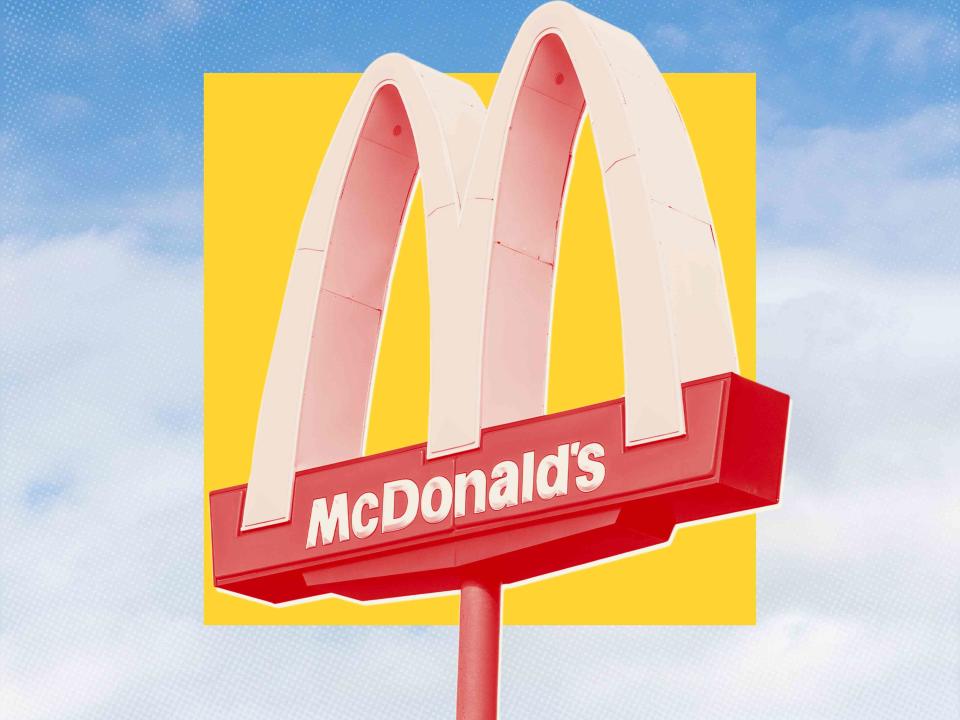You Can't Actually Order a Milkshake at McDonald's—Here’s Why
And it isn’t because the ice cream machine is down.

Adobe Stock/Allrecipes
You’ve probably pulled through the McDonald’s drive-thru at least a dozen times, and you probably think you’ve seen a milkshake on the menu every visit. Actually, you haven’t—and believe it or not, there hasn’t been one sold at the franchise in over 50 years.
This might sound confusing if you just picked up the newest (and most controversial) flavor of a McD’s dessert drink last week. But, as it turns out, McDonald’s creamy, frozen treats aren’t actually called “milkshakes.” Why? Because they’re technically not milkshakes, at least in some states.
This isn’t a regional preference like “pop” vs. “soda”—it actually comes down to dairy regulations across states. That means on the same road trip, your “milkshake” could turn into a “dairy shake” as soon as it crosses state lines.
Why Aren’t McDonald’s 'Shakes' Called 'Milkshakes'?
Thick, frozen shakes have been a staple at the Golden Arches since the chain first started, but they were only listed as “milkshakes” for the first couple of years. Now, all the iconic McD’s flavors, from Shamrock to the new Grimace are considered “shakes.” Here’s why.
In the U.S. milk and milk products are regulated under the Pasteurized Milk Ordinance which provides a framework for grading and processing milk products to prevent contamination and foodborne illness. But, because the PMO is not federal law, states can (and have) made amendments and additions to those guidelines.
This is why you might have come across raw milk in a California grocery store, but you’d never be able to find it in Illinois or Florida.
On top of that, there’s a whole lot of overhead regulation involved in defining frozen dairy products such as ice cream, gelato, custard, or milkshakes. In fact, your favorite ice cream flavor might not be ice cream at all.
These classifications are defined by milkfat content, amount of stabilizers, the use of flavorings and additives, and even the percent of total solids by weight. So, if the frozen drink has too much or too little milkfat, it would lie outside the legal milkshake category.
McDonald's milkshakes are made with a soft-serve ice cream mix, which consists of dairy, sugar, and a "proprietary blend of ingredients." A specialized machine is used to incorporate air, giving the blend a creamy and thick consistency without the need for much real dairy.
So, the reason their shakes are so light, soft, and smooth is the same reason they taste different than homemade milkshakes.
"We like to keep it simple and refer to them strictly as 'shakes,'" the brand explains on its FAQs page.
Do Any Fast Food Restaurants Serve Milkshakes?
McDonald’s isn’t the only one dodging these legal boundaries. Dairy Queen, Sonic, and Burger King are all serving up different flavors of “shakes” as well.
The savvy chains have rebranded their milkshake offerings to something entirely different, like Wendy's "Frosty” or Starbucks' "Frappuccino." Unique names like "Blizzard" at DQ and "Icedream" at Chick-fil-A also help chains avoid the ice cream dispute as well.
Shockingly, not even Chick-fil-A’s hand-spun, old-fashioned milkshakes can be included in the mix. Their shakes aren’t spun from a real ice cream base, but from their Icedream dessert, which doesn’t have the butterfat required to be a true ice cream.
Sure, it might come down to semantics in the end, but at least someone is paying attention to what actually goes into those irresistibly tasty fast-food treats.
So, if you’re really after a true, authentic milkshake, you might be better off finding one at a local joint that knows your state's milk laws.

